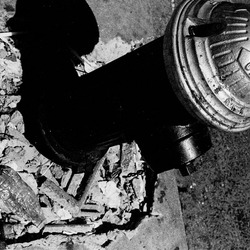The Web as an information ecosystem is not in danger. On the other hand, the paradigm of the web "site" as a space you travel to is, I believe, moribund. It is a major shift that finds its origin, among other things, in the development of mobiles.
An Exercise in Stereotypes
May 18, 2010
Part of my work with Pheromone is to help the company define its future orientation, and how to get there. Armed with my experience in Japan, the good gospel from my visit to the Mobile World Congress 2010 and (at last!) the awakening of the Canadian market to mobile internet usage, I set out to write a document explaining how the agency, not really known for anything beyond interactive strategy and producing web sites, could shine in the mobile market. After half a week of writing, I was pretty proud of myself.
My document sucked.
It was well received by the colleagues and managers I showed it to, but behind the thanks and praise it was clear that their real opinion ranged from “tell me something I don’t know” to “too much bullsh*t”, via “not ambitious enough”. Truth is, it was a messy mix of half-baked vision for our management, sales points for our account managers, and a hodgepodge of ways to make our team better at tackling this challenge.
Back to the drawing board. This time however, I did what I do best: gather people, make consensus emerge, and synthesize it into something even better. First, I stripped my document of all its grandiloquent sales stuff, all the operational ideas, and rewrote it as a manifesto: a simple, five sentence-long, explanation of my vision: ubiquity (beyond mobile), freedom (in the mobile context), usefulness here and now, platform independence, and simplicity.
Then, one by one, I took each team in a large room with a blackboard, and had them work on the following exercise. I gave them the manifesto and drew three columns on the blackboard: Strengths, Weaknesses, and Wishes.
In the first column we were to list all the strengths that would help us fulfill the manifesto I’d given them: their own strengths, their team’s, the company’s – opportunities, too. Likewise for weaknesses. And in the third, I wanted them to tell me the wishes they had, what they thought we needed to make it happen, what solutions they had to our weaknesses, what could enable or empower us.
Those used to strategic planning will have of course recognized a bastardized version of the SWOT (or SPOT) analysis. The venerable tool can be very useful with business-oriented people, but it has often appeared to baffle of scare away others, so my version tries to be a gentler, kinder SWOT.
Because it was easier to hijack existing teams’ meetings than to gather random groups one by one, I had a chance to observe the different reactions and dynamics of our designers, developers, etc.
The designers (our UX and Art team) came first, and had a fairly balanced approach. The weaknesses they pointed out were rather focused on emotion and perception, and their third column was very clearly about wishes – about how they would like to work and what they would like to play with – and not so much on solutions.
Then came the conseil team (advisors, account managers and strategists) and although not the largest team, they were rather prolific. Their view was mostly focused on business – their first column had more opportunities than strengths, and their last column was very much about partnerships, market and process, yet I think it is fair to say that their insight embodied the whole team rather well.
Third team I had the exercise with were the project managers. They were passionate, finding very few strengths but working a lot on issues and solutions. Not surprisingly, their focus was a lot on the way we work, with a lot of good ideas for tools and processes. One bizarre aspect of their analysis is that I could take the result of their brainstorm, slap a completely different title on it such as “innovation”, “profitability” or “efficiency”, and it would work just as well. Albeit great, their reflection had not much, if anything at all, to do with the question of ubiquity or mobile projects.
Finally, I worked with the developers, and was in for yet another surprise. Never have I seen a group so blatantly and immediately focus on solutions, without bothering with the expression of the problem first. They had, I think, the best ideas, most concrete and easiest to apply – but I had to struggle to get them to define the problems they were fixing, and had to fight even more to squeeze out a few items for the “strengths” column. The old “if it ain’t broken don’t fix it” motto applied here, and the dev team really didn’t understand why we should spend any time on things that work just fine until I hinted that perhaps it would be wise for them to show how apt their team was at taking this challenge on.
I came out of the whole exercise with the most amazing material. The second version of my document, albeit by no means perfect, is in a complete different league from the first. But I also came out of it a little jarred and alienated by the exercise in stereotypes, and vowing never again to conduct it in ways that favour groupthink within company subcultures.
Previous/Next
The Web Site: a moribund metaphor
2010-04-29
New York
2010-07-31
Comment avaler le pavé brûlant et tous les clichés de Manhattan, les hipsters de Williamsburg et la candeur d'Astoria, Queens en une chaude journée?
